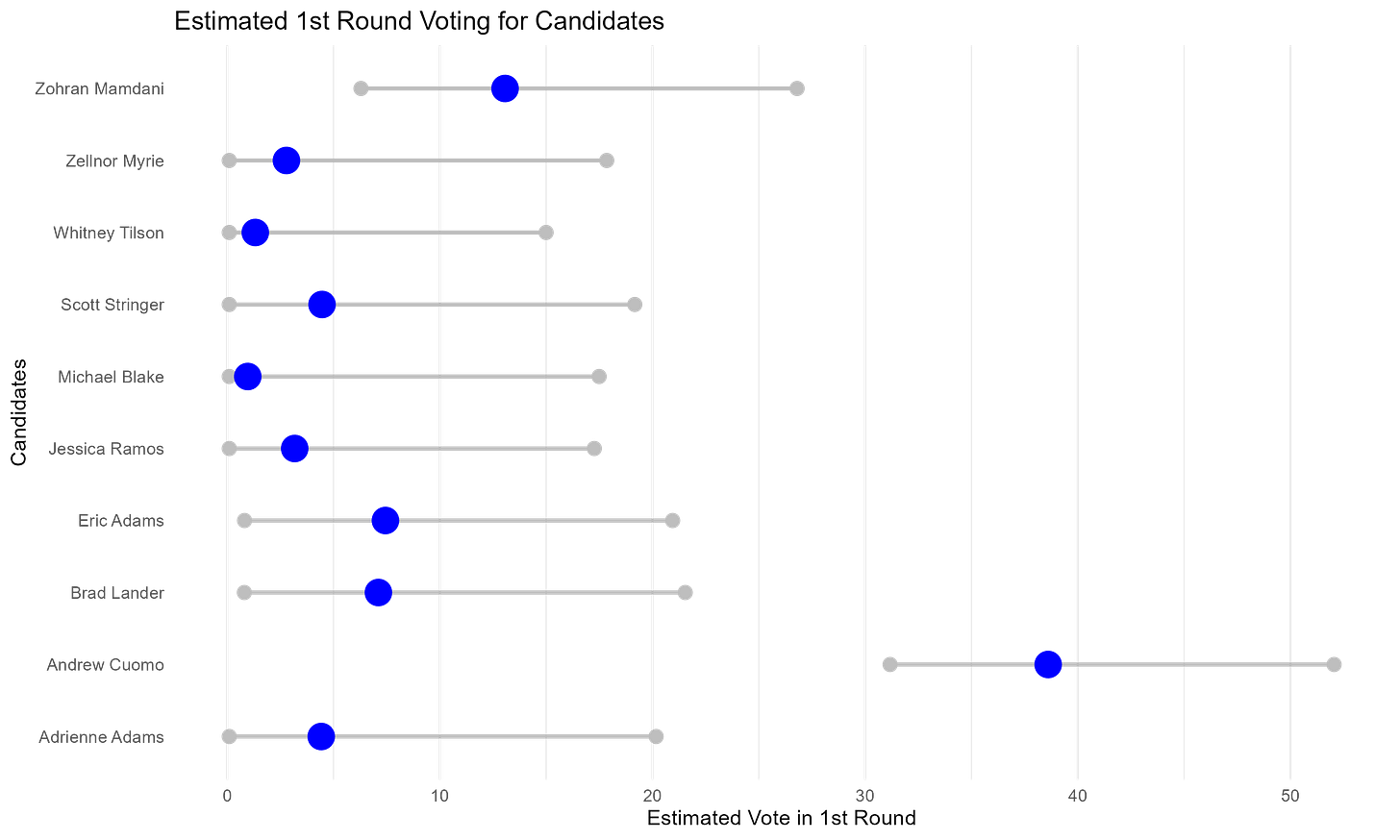“It's like déjà vu all over again.” ~ Yogi Berra
Bracket busted? No problem.
Ghost busted? Not my problem.
City busted? Houston, we have a problem.
We are many rounds away from narrowing down our final four candidates for mayor, but building on what I wrote last week regarding betting markets, you were due insights from our first MayorModel. I promise I will write other content, but since we are in election season and elections have fun data, 2xParked will continue to keep you ahead of the game.
MayorModel: First Results
Remember, these are estimated —not even real — probabilities so they should not be used in the same sentence as “absolute truth.” These results are a fun way of seeing the city holistically on a potential election night. They should not, under any circumstance, be used as betting advice.
If nothing is 0% or 100%, a lot can, and likely will, change. I will provide updates and insights when something changes. Here are a few initial observations:
Given the polling, where Gov. Cuomo is at 35-45% for first place ballots, it should be no surprise he is the leader out of the gate.
A question I asked last year was how progressives will handle this race. RCV endorsements are fun and inoffensive, but politics are not the sole driver for ranking candidates. Having one candidate with 30% creates a more publicly known candidate than three with 10%, so will we see consolidation? Right now Zohran Mamdani has the lead among progressive candidates, but as we can see below, there is a real opportunity for another to rise. Who might that be?

Eric Adams has a tough road ahead. This should not be a surprise given 20% favorability and that 56% of New Yorkers think he should resign. He still has some time to heal his polling, but the clock is ticking.
These numbers strongly align with what is reported on the betting market. This is neither a prerequisite nor a validation of my model, but it might point to bettors getting similar results from similar types of models.
Under the Hood
This should not feel like it was generated in a black box, so I have included a high level overview of how the MayorModel works:
Although Nate Silver’s presidential model methodology was an inspiration, there are key challenges I face in this unique election:
I Have Less Data. Presidential elections have decades of data from a plethora of polls at a state and national level. I only have data as far back as 2009.
Less Data = More Bias. I have to make assumptions such as what techniques I should use and what data I should include. Although I am doing what I feel reduces bias, any choice I make will have a grand impact.
Undecideds are Undecided. In presidential elections, even at the swing state level, the undecided vote is generally < 5%. The undecided vote is 15-20% at present, which is what it usually is at this time. A candidate can be disproportionately impacted by something as small as a NY Times endorsement.
Rank Choice Voting. Not only am I predicting 1st place ballots, I have to predict downstream rank choice voting. This adds another level of unpredictability, little data, and more assumptions.
Til Next Time
This model is far from perfect. There are models and models of models adding levels of uncertainty. I will do my best to discern what is real vs model assumption vs debatable.
In the meantime, go out and enjoy future 70+ degree sunny days and support your local newsletters.






